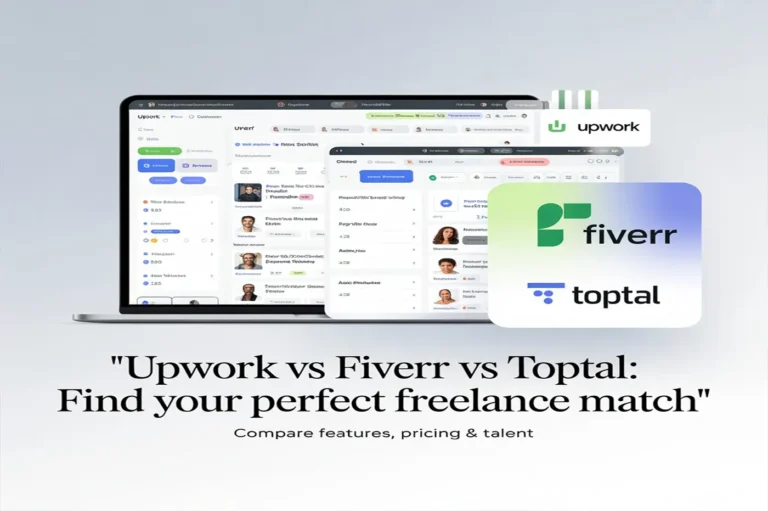Freelancing offers freedom and flexibility, but with that freedom comes responsibility. Unlike traditional employees, freelancers handle their own contracts, payments, and taxes.
If you’re new to freelancing, this side of the business can feel intimidating. However, learning how to handle the legal basics will protect your income, keep clients accountable, and prevent costly mistakes down the road.
In this guide, we’ll break down freelance contracts, invoicing best practices, and how to handle taxes, step by step.
Why Freelancers Need to Take the Legal Side Seriously
Working without clear agreements or proper paperwork can lead to:
- Late or missed payments
- Scope creep (clients asking for more work than agreed)
- Disputes you can’t win because nothing is documented
- Tax penalties or unexpected bills
Taking time to understand contracts, invoicing, and taxes makes your freelance business professional, protected, and profitable.
Freelance Contracts: Protecting Yourself and Your Work
What Is a Freelance Contract?
A freelance contract is a simple legal agreement between you and your client. It clearly defines:
- What work you will do
- How much you’ll get paid
- Deadlines and deliverables
- Payment schedule
- What happens if someone cancels the project
Why You Need a Contract
- Sets clear expectations: thisavoids misunderstandings
- Provides legal proof if there’s a dispute
- Shows you’re a professional, not a hobbyist
What to Include in Your Contract
Here’s what a basic freelance contract should cover:
| Section | What to Include |
| Scope of Work | Describe exactly what you will deliver. Be specific. |
| Payment Terms | How much you’ll charge, how you’ll be paid (e.g., PayPal, bank transfer), and when payment is due. |
| Timeline & Deadlines | When work starts, milestones (if any), and final due date. |
| Revisions | How many revisions are included, and how extra changes are billed. |
| Termination | How either party can end the contract, and what fees may apply. |
| Ownership | Who owns the work when payment is made (e.g., client gets full rights after payment). |
How to Create a Contract
1. Use a template: Many freelancers start with a simple template. Sites like Bonsai, AND.CO, or free sites like HelloSign offer ready-made freelance contract templates.
2. Customize it: Fill in your project details, rates, and deadlines.
3. Get it signed: Send it digitally for e-signature. Tools like DocuSign or Adobe Sign make this easy
Tip: Never start work without a signed agreement, even for small jobs.
Freelance Invoices: How to Bill Clients Properly
What Is an Invoice?
An invoice is a professional request for payment. It lists:
- What work you did
- How much the client owes you
- How and when to pay
Clients expect invoices:it’s a sign you run a legitimate business.
What to Include in an Invoice
A good freelance invoice should include:
- Your information: Name, business name (if any), address, email
- Client’s information: Name and address
- Invoice number: Unique number to keep things organized
- Invoice date: When you issue the invoice
- Description of services: Be specific (e.g., “5 blog posts @ $100 each”)
- Total amount due: Show clear calculation
- Payment terms: When payment is due (e.g., “Due within 14 days”)
- Payment methods: Bank details, PayPal address, etc.
How to Make an Invoice
- Use an online tool: Wave, PayPal Invoicing, Bonsai, FreshBooks, or AND.CO.
- Use templates: Free templates in Google Docs or Microsoft Word work fine.
- Send as PDF: Always send a finalized PDF so details can’t be edited.
Tip: Follow up politely if a client is late. A simple reminder often does the trick.
Freelance Taxes: What You Must Know
Freelancers are self-employed, this means:
- You pay your own income tax and (in many countries) self-employment tax.
- Taxes are usually not automatically deducted, you must set money aside.
- You may need to file taxes quarterly.
Steps to Manage Taxes as a Freelancer
Track Your Income & Expenses
Keep clear records of:
- All payments received (save invoices and payment confirmations)
- Business expenses (software, internet, office supplies, marketing costs)
Tools like QuickBooks Self-Employed or Wave can automate this.
Set Aside Money for Taxes
A common rule is to save 20%–30% of each payment for taxes. Don’t spend it.
Understand Quarterly Taxes (if required)
In many countries (like the U.S.), freelancers must pay estimated taxes every 3 months to avoid penalties.
Hire a Tax Professional (Recommended)
Freelance taxes can get complex. If you earn regularly, working with a small business accountant can save you money and stress.
Freelance Legal FAQs
Do I need to register a business?
For many freelancers, you can operate under your own name as a sole proprietor. If you want extra protection, you can register an LLC or similar, but check your local rules.
Do I need to charge sales tax?
This depends on your location and the type of service. Some services are taxable; others aren’t. Always check your local laws or ask a tax advisor.
What happens if a client doesn’t pay?
A signed contract helps you chase payment legally. Start with friendly reminders, then consider sending a formal demand letter. For large unpaid invoices, you may need legal help or a collections agency.
Key Takeaways
- Always use a written contract.
- Send clear, professional invoices.
- Track your earnings and expenses.
- Set aside money for taxes so you don’t get a surprise bill.
- Get help from legal or tax professionals as your business grows.
Conclusion
Freelancing can be a dream job, but only if you protect yourself legally and manage your money wisely. Understanding contracts, invoicing, and taxes will save you headaches, safeguard your income, and show clients you’re a professional worth hiring again and again.



